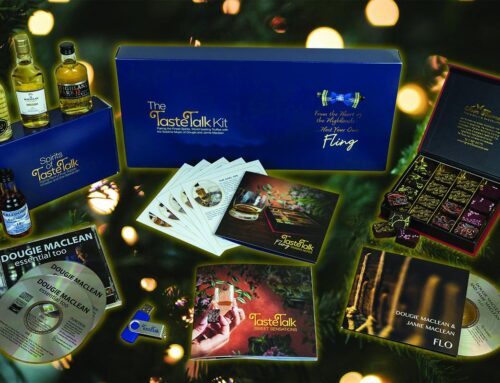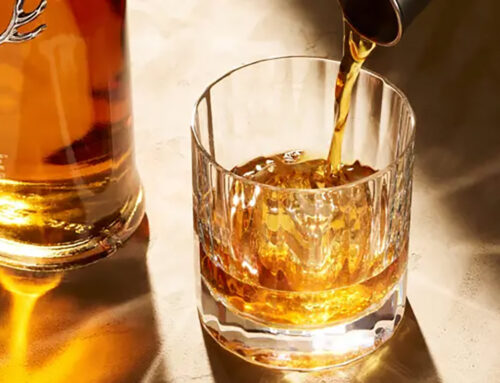Exploring Whisky Tastes: A Breakdown of Flavours in the World of Whisky
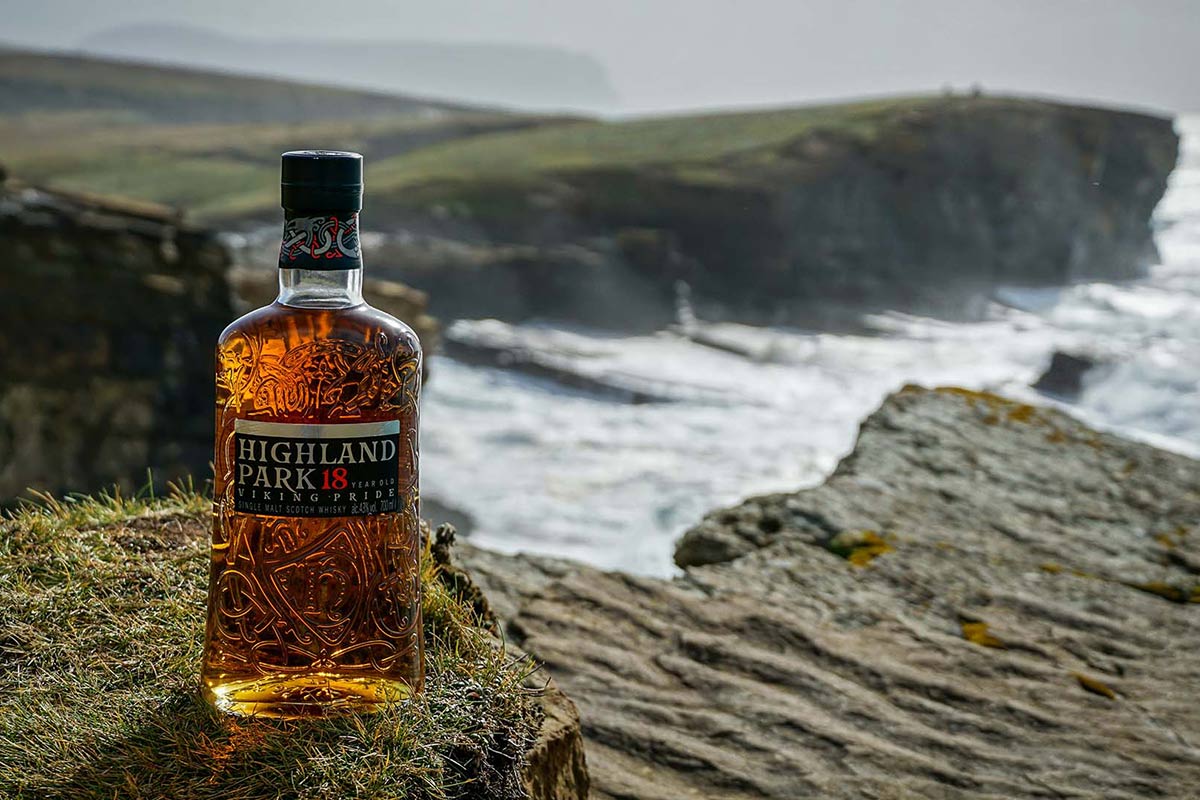
Welcome, whisky enthusiasts and curious newcomers! Prepare to embark on a flavourful journey through the fascinating world of whisky, where whisky tastes offer diverse flavours like sweet, smoky, spicy, and fruity. With this whole universe waiting to be explored, are you ready to dive into the art of whisky tasting and discover the nuances that make each sip unique? Let’s begin!
Key Takeaways
- Explore the exciting world of whisky tastes and flavours, from sweet to smoky, spicy to fruity!
- Experience the thrill of uncovering hidden flavour notes and lingering finish through nosing & tasting whisky.
- Excitingly explore different styles and discover new whiskies with food pairings for an ultimate experience!

Understanding Whisky Flavours
Comprehending how flavours manifest is key when you embark on your whisky journey. The foundation of whisky tastes and flavours lies in malted barley, with the distillation process and ageing in oak barrels playing crucial roles in shaping the final product. Each whisky has its unique set of flavours, depending on various factors such as the region where it’s produced and the type of cask used for ageing.
Four fundamental flavour groups await your discovery in this flavorful realm:
- Sweet
- Smoky
- Spicy
- Fruity
Each group offers a distinctive tasting experience, appealing to different preferences and palates. Ready to delve deeper into these enchanting flavour categories? Let’s go!
Sweet Whisky
With its irresistible flavours of vanilla, honey, and toffee, sweet whisky frequently serves as a gateway for newcomers. Bourbon, a style specific to the United States, is a shining example of sweet whisky, with its primary ingredient being corn and aged in charred white oak barrels. Common flavours in bourbon include caramel, cinnamon, and vanilla, making it a delightful treat for those who enjoy a sweeter touch.
Besides bourbon, other types of sweet whisky include Canadian Rye, which boasts a rich honey flavour, and blended Scotch and Irish whiskies, known for their soft and supple characteristics. With plenty of options, sweet whiskey is a delightful starting point in the world of whisky drinks.
Smokey Whisky
With its bold and intense experience, Smokey whisky has become a favourite among enthusiasts. Characterized by peat smoke, tobacco, and dark coffee notes, smoky whisky is typically found in peated scotches from the Islay region of Scotland. Peat is a dense moss lit on fire to dry the malted barley during Scotch whisky production. This process gives the whisky its smoky character.
Islay single malts such as Lagavulin, Laphroaig, and Ardbeg are renowned for their smoky flavours, inviting you to venture into a world of rich, complex aromas and tastes.
If you’re ready to embrace the smokiness, hold on tight, and remember the journey is just as important as the destination!
Spicy Whisky
Offering an exhilarating mix of flavours like chilli pepper, clove, and cinnamon, spicy whisky isn’t for the faint-hearted. American Rye whiskey is a prime example of this category, offering a robust and warming taste experience.
If you’re eager to explore the world of spicy whisky, here’s a fun tip: think of things you already like, such as foods, soft drinks, and aromas, and enthusiastically reflect on the whisky flavours that align with your preferences. Sampling cask-strength whisky is another way to experience the intensity of spicy flavours. This style of whisky is never watered down after exiting the barrel, providing a more potent and flavourful drink.
Fruity Whisky
Fruity whisky, a versatile category, spans a wide spectrum of flavours, from light, citrusy notes to rich, dark fruit undertones. These flavours are in various whiskies, such as traditional triple-distilled Irish single malt and Speyside single malt Scotch. Fruity whisky flavours include tropical notes like banana, mango, and pineapple, citrus fruits like grapefruit or orange, and orchard fruits like apples, pears, or persimmon, to name a few.
The world of fruity whisky is full of surprises, as each sip can reveal new flavours and nuances depending on the ingredients used in the production process and the maturation in bourbon casks. So, why not embark on a fruity adventure and see what delightful combinations you might discover?
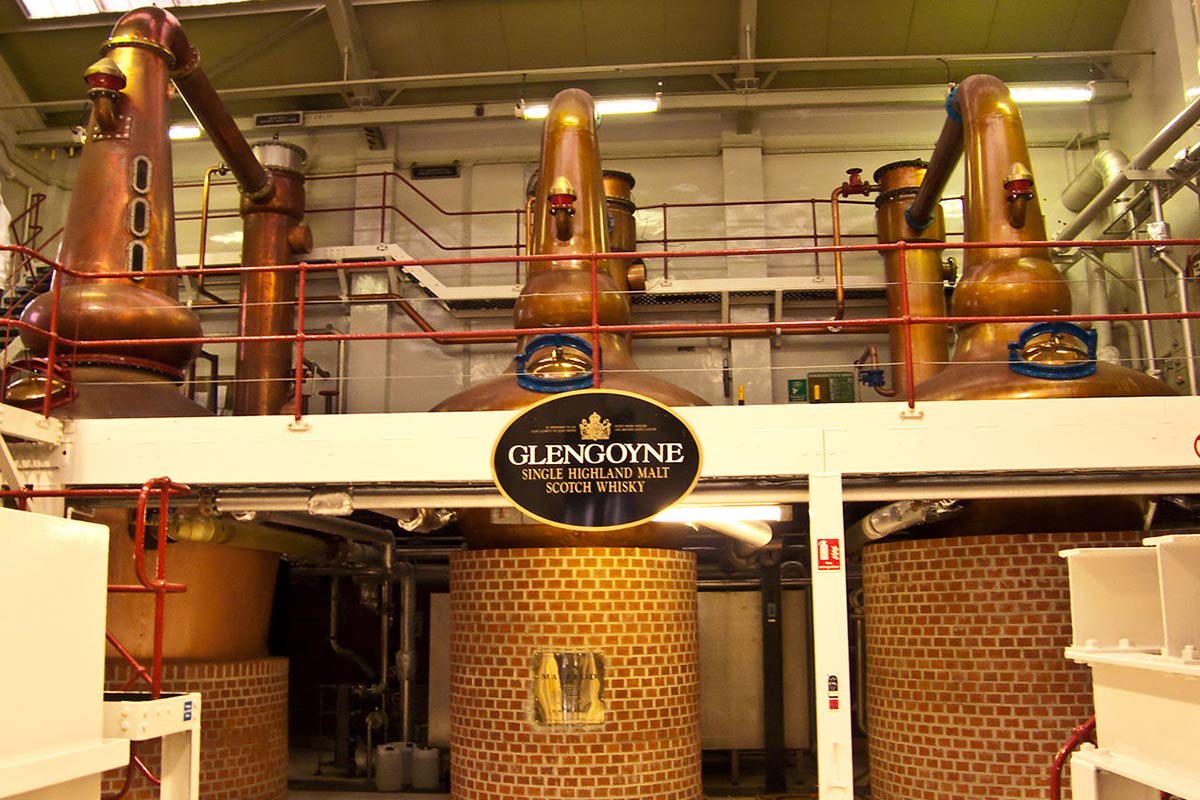
Exploring Whisky Tastes
Following a proper tasting process is fundamental to fully appreciate and fully grasp the vast array of whisky flavours. This involves observing the whisky’s appearance, nosing its aroma, and evaluating the palate and finish. Each step plays a crucial role in helping you identify specific notes and nuances, ultimately refining your palate and enhancing your whisky experience.
Observing Appearance
Start your whisky taste experience by observing the whisky’s appearance in a tulip-shaped glass, such as a Glencairn, which enhances the drink experience. Assess the whisky’s colour, clarity, and viscosity, as these can provide exciting clues about its age and cask type.
The visual aspect of whisky tasting sets the stage for the following delightful sensory experience.
Nosing the Whisky
One of the most crucial steps in whisky tasting is nosing the whisky. Smelling the whisky reveals more about its flavour profile than tasting alone, helping you identify specific notes and nuances. Before nosing, check the ABV of the whisky to ensure you’re prepared for the intensity of the drink.
To nose the whisky, follow these steps:
- Swirl it in the glass to release its aromas.
- Bring the glass to your nose.
- Memories linked to smells can help you excitedly pinpoint the flavours you’re picking up.
Nosing the whisky is essential to unveil each sip’s hidden treasures.
Palate and Finish
Now comes the most awaited moment – tasting the whisky. Savour the mouthfeel, taste, and lingering flavours, and pay close attention to the finish, which is the lasting impression the whisky leaves on your mouth. Depending on the lingering flavours after swallowing, the finish can be short or long.
To get the most out of your whisky, consider adding a few drops of water to unlock its full potential and reveal its hidden notes. This simple act can enhance your drink experience and allow you to discover new elements in the whisky.
Remember to jot down your tasting notes, which will help you remember certain flavours for future reference.
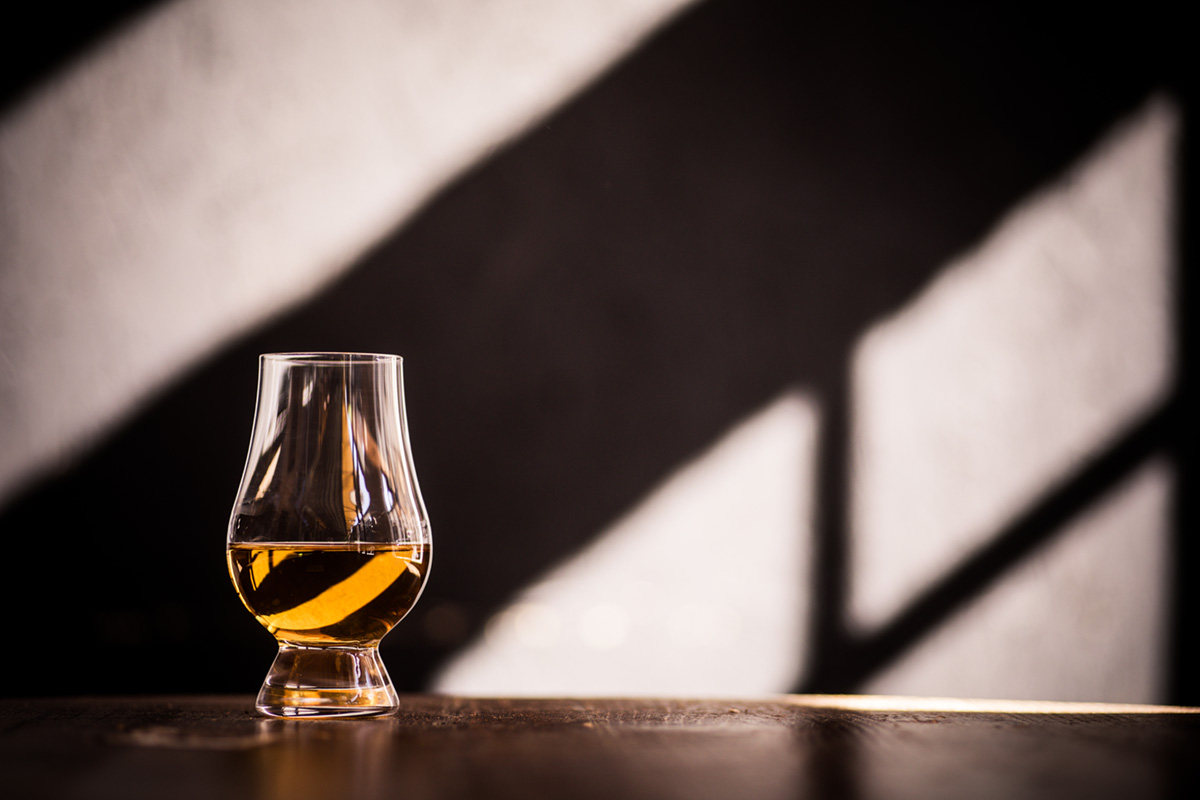
Whisky Styles and Their Unique Flavours
With their distinct flavour profiles and characteristics, different whisky styles appeal to a wide range of palates. Some famous whisky styles include single malts and blends, each with unique flavours and nuances to explore.
As you dive deeper into the world of whisky, you’ll encounter an exciting variety of styles, allowing you to discover your favourites.
Single Malt Whiskies
Single malt whiskies are produced at a single distillery, showcasing that specific distillery’s unique flavours and style. Every single malt offers a distinctive taste experience, with the flavour profiles varying significantly across various regions.
As you explore single malts, you’ll encounter an array of flavours that reflect the distillery’s unique characteristics and the region’s influence. This journey through single malts will give you a deeper understanding of the diverse world of whisky flavours.
Blended Whiskies
Blended whiskies, on the other hand, combine whiskies from multiple distilleries, offering a diverse range of flavours and experiences. Blends can be more approachable for beginners, as they often incorporate a mix of:
- grain and single malt whiskies
- neutral spirits
- colourings
- flavourings
As you dive into the world of blended whiskies, you’ll discover an incredible variety of flavours waiting to be explored. From back bars to liquor cabinets around the world, there are countless blends to sample and enjoy.

Discovering New Whiskies
Continual palate expansion and discovering new whiskies is vital if you aspire to become a whisky connoisseur. Sampling whisky flights, attending tastings, and experimenting with food pairings are fantastic ways to experience the vast world of whisky flavours.
Our Taste Talk Kit is the perfect way to explore the pairings of Scottish malt whisky with luxurious chocolates made by The Highland Chocolatier.
Embrace the adventure and allow yourself to be surprised by the incredible variety of tastes and aromas waiting to be uncovered.
Sampling Whisky Flights
With the opportunity to compare whisky tastes and identify personal preferences, sampling whisky flights provides an excellent way to try a variety of whiskies side by side. To get the most out of your whisky flight experience, follow these steps:
- Start with the lightest whisky.
- Work your way up to the strongest whisky.
- This approach ensures you fully experience the range of flavours and aromas of each whisky.
Remember to cleanse your palate between each sample and take small sips to savour the whisky. Sampling whisky flights is an enjoyable and educational experience, as it helps you refine your palate and deepen your understanding of whisky flavours.
Attending Whisky Tastings
Attending whisky tastings and events opens another avenue to discover new whiskies and learn from experts and like-minded enthusiasts. During a tasting, you can sample different types of whiskies, including single malts and blends, and learn about the distillation process and flavour profiles.
Whisky tastings are educational and a social experience, allowing you to connect with other whisky enthusiasts and share your discoveries. So, don’t miss out on these events – they could be the key to finding your next favourite whisky.
Experimenting with Food Pairings
Pairing your whisky with complementary foods that highlight unique flavours and nuances can significantly enhance your tasting experience. Experimenting with food pairings can dramatically elevate your whisky-tasting experience as different flavours, textures, and aromas interact to create harmonious taste sensations.
Some food pairings include smoked salmon with a smoky whisky, dark chocolate with a sweet whisky, and spicy chicken wings with a spicy whisky. The possibilities are endless, so don’t hesitate to get creative and explore new combinations. You might just stumble upon a match made in heaven!
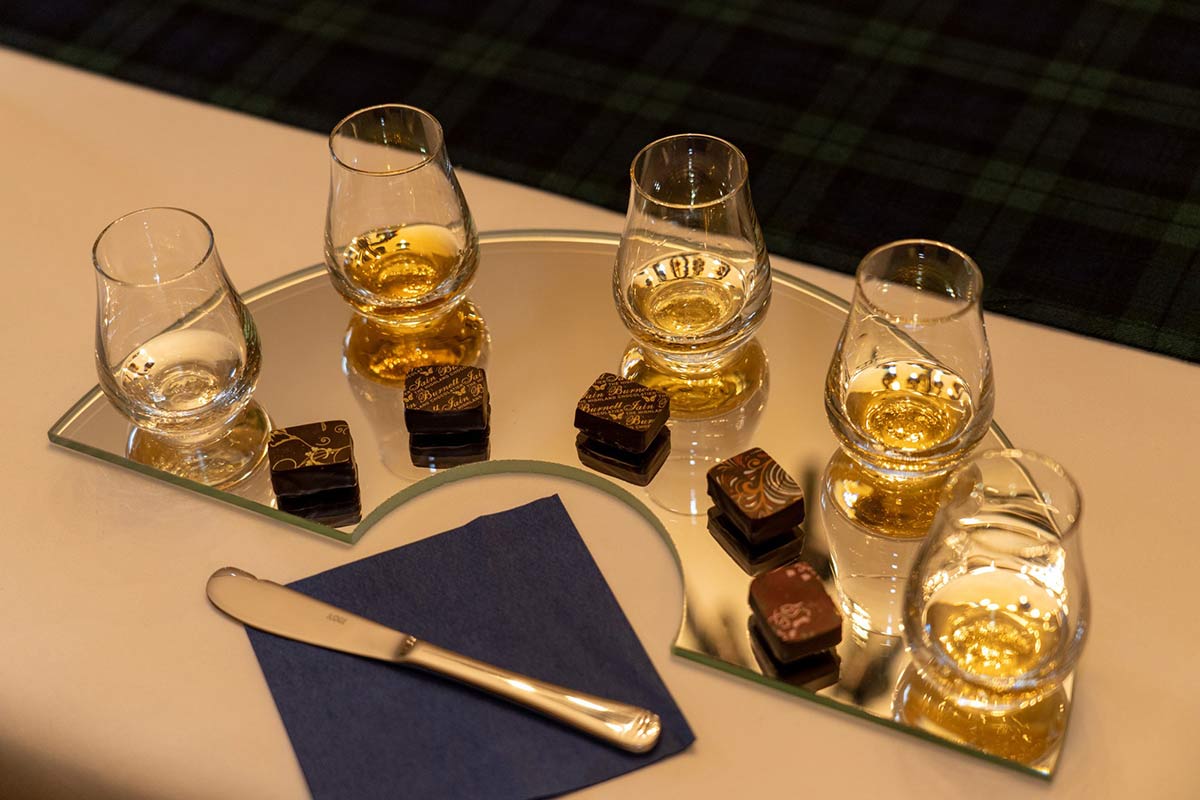
Summary
The world of whisky tastes and flavours is vast and diverse, offering a myriad of exciting experiences for both newcomers and seasoned enthusiasts. From sweet, smoky, spicy, and fruity whiskies to single malts and blends, a flavour profile suits every palate. Embrace the tasting process, attend tastings, sample whisky flights, and experiment with food pairings to truly discover the magic and complexity of whisky. May your journey through the enchanting world of whisky tastes be filled with delightful discoveries and unforgettable moments.
If you found this post helpful, you may want to learn more about whisky tastes, one of the best resources we found exploring whisky flavour profiles was at the Scotch Malts Whisky Society Website. Enjoy!
Frequently Asked Questions
What does a whisky taste like?
Whisky has a rich and smooth taste, with sweet notes of vanilla, zesty fruit, oak, malt, spices, dried fruit and possibly smoky notes. Different types and production methods will add nuances to the flavour profile, including coconut, caramel, cinnamon, toasted almonds and nutmeg.
What are the Flavours of whisky?
Experience the unique flavour notes of whisky with eight main categories, from peaty to fruity, floral, winey, woody, cereal and sulphury. With countless adaptations over the years, most single malts and grains now fall into one of five distinct categories – an exciting journey for your tastebuds!
Is whisky sweet or bitter?
Whisky is often sweet but can also be made bitter by charring white oak casks for storage and ageing.
What are the 4 types of whisky?
Discover the delightful world of Whisky with 4 essential types – Scotch, Irish, Bourbon and Tennessee, each with its own unique qualities! Let the sipping begin!
How does the distillation process and ageing in oak barrels influence whisky flavours?
The distillation process and ageing in oak barrels are essential in imparting complex flavours to whisky, creating an individual flavour profile unique to each blend.

